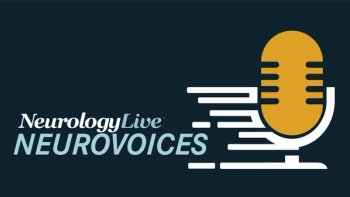
- August 2023
- Volume 6
- Issue 4
The Impact of a Social Media–Based Educational Intervention to Promote Training in Social Determinants of Health Among Medical Residents
Social determinants of health are conditions that people are born into and live under that affect their health, and can greatly impact clinical outcomes as well as contribute to health disparities and inequalities.
Prefer to listen to your news? Click play to hear this article read aloud by AI. [LISTEN TIME: 10 mins]
AWARENESS OF SOCIAL DETERMINANTS OF HEALTH (SDOH), the conditions that people are born into and live under that affect their health, has increased dramatically in the past decade.1 Patients’ SDOH greatly impact clinical outcomes; it is estimated that up to 60% of premature deaths are caused by socioeconomic conditions such as behavioral patterns, environmental exposure, and social circumstances.2 Furthermore, patients of the lowest socioeconomic status have been found to have the greatest operative mortality.3 Examples of SDOH include neighborhood crime rates, access to transportation, adequate nutrition, physical activity, education, job opportunities, and child care support. SDOH contribute to health disparities and inequalities that physicians must be aware of to deliver the best personalized quality of care for vulnerable populations.
Although awareness of SDOH has grown within the medical community, identifying and supporting patients with unmet SDOH needs has been a challenge. In a recent study of 123 patients, 86.2% of patients screened positive for social needs while only 3.3% of patients requested help for those unmet needs.4 In another study with a nationally representative sample of 4699 nonelderly adults receiving care at community health centers, only 36% reported receiving social needs assistance and those receiving assistance perceived quality of care as “the best.”5 Unmet social needs are even more prevalent in low-income communities, with 91% of patients earning less than $25,000 reporting unmet social needs.6 These findings indicate that providing support for patients based on their individualized SDOH largely impacts quality of care, yet thus far medical centers have struggled to support these social needs.
One particular barrier to incorporating SDOH screening and support into clinical care is the lack of SDOH physician training. A 2020 study determined that fewer than one-third of residents reported being experienced at identifying and addressing SDOH in outpatient settings.7 Thus, a first step to ensuring patients’ SDOH needs are met is integrating SDOH education into the medical school and residency curricula. Physicians have a responsibility to identify patients’ SDOH-related challenges, discuss them with patients, and address them by employing a patient-centered and team-based approach to care. There is, however, a lack of consensus on the most impactful methods to deliver SDOH training to health care providers.
The Role of Social Media in Residency Education
In a post–COVID-19 world, social media platforms have been increasingly utilized as a vehicle for medical education by encouraging the formation of learning communities.8 Recent research shows that over 91% of health care professionals use social media platforms and online forums at work.9 Trainees particularly find social media to be a useful form of medical education given that over 88% of medical students report using social media to “learn medicine.”10 As an accessible educational platform, social media reaches a vast number of learners and allows flexibility compared with traditional, synchronous methods of learning such as lectures. One particular benefit of social media–based education is that students may feel more comfortable interacting with educators since they perceive social media as having “flattened hierarchies.”11 These findings indicate the potential role social media can play in the delivery of SDOH education to rising physicians.
Twitter, which was rebranded X on July 24, is a form of social media that allows users to generate tweets (ie, short text posts that can include pictures, polls, and media links) and use hashtags to connect with a particular community.12 The number of US physicians who are active on Twitter has been increasing each year. For example, there were 12,675 accounts in 2016 while in 2020, there were 26,987, representing a 112.2% increase in just 5 years.13 “Tweetorials” (ie, collections of threaded tweets) present a unique opportunity for learners from various training levels to learn from other physicians in the field.14 Using tweetorials, trainees can readily access helpful literature links in addition to interactive aspects like polls or surveys, which have been shown to result in greater user participation.15 A recent study showed that participants were increasingly satisfied with Twittercentered educational communities if users felt a connection to other participants.16 Thus, Twitter can be an especially useful educational tool to supplement learning among medical residents who already have a sense of connection to each other. Considering the current lack of adequate SDOH physician training, the large number of health care workers active on social media platforms like Twitter presents a promising method for using these platforms to improve SDOH awareness.
Our Approach: Implementing Tweetorials in SDOH Education
Our team sought to leverage social media as a vehicle for medical education delivery by implementing and evaluating a tweetorial-based intervention in SDOH training for Montefiore Health System medical residents. We first administered a preintervention survey to assess satisfaction with SDOH training. We then held 6 sessions through which 53 residents each received the tweetorial intervention once. Because some participants might not be familiar with tweetorials, we chose to present the tweetorial in a synchronous, real-time manner to address any technical issues or questions in real time. The SDOH-focused tweetorial was posted on a Twitter account made specifically for this study. After the intervention, postsession data were collected to assess trainees’ competency in screening for and addressing SDOH with patients.
We observed that 35.9% of tweetorial intervention participants rated themselves as competent, highly experienced, or expert in engaging families in conversations about child or elderly care needs preintervention, while 54% rated themselves as such postintervention. There was a 19.8% increase in the tweetorial participants rating themselves as competent, highly experienced, or expert in engaging families in conversations about legal help needs. Overall, our findings show that tweetorials resulted in a significant increase in selfgraded SDOH knowledge and competency in engaging patients. Additionally, the participants were highly satisfied with the Tweetorial learning format. Our results suggest that tweetorials are a feasible and effective method for delivering SDOH education to residents. In the future, tweetorials can be used to provide SDOH training and can be adapted to diverse topics for education (FIGURE).
Summary and Future Directions
The pandemic has underscored the importance of exploring education delivery methods beyond traditional in-person lectures. For instance, a recent study demonstrated that a combination of in-person and online learning resulted in consistently improved knowledge-related outcomes.17 In comparison to in-person lectures, tweetorials can reach a wider audience, allow for self-paced progress, and engage the trainee with interactive content such as polls. As learning health systems move into a technology-centered future, learning will involve a combination of multidisciplinary approaches, online interactive tools, and traditional methods. Thus, implementing and validating innovative educational modalities among neurology trainees to discover the most impactful pedagogical methods is crucial. The integration of online learning into medical education can result in educators having more time to provide one-on-one support to enhance student learning.
One limitation of our study was the presentation style of the tweetorial. A recent study showed that unfamiliarity with Twitter was a barrier to utilization as a learning resource.18 To eliminate this barrier, our tweetorial sessions were presented synchronously via a Zoom-based presentation to guide learners through the process of participating in a tweetorial. While presenting the tweetorial in this manner ensured that participants’ unfamiliarity with tweetorials did not impact survey results, it did not allow participants to interact with the tweetorial asynchronously at their own pace. Furthermore, while participants’ self-reported SDOH knowledge increased after intervention, we did not measure the referrals being made to the community—a closed loop needed to quantify the impact on addressing unmet SDOH needs. It is also important to consider the potential risks of using social media platforms as a form of education, including the potential for misinformation. Regardless, tweetorials present a unique opportunity for the delivery of engaging information online, as supported by our study’s findings that residents’ knowledge about various SDOH topics significantly increased post-tweetorial intervention.
Going forward, residency education should maintain a focus on patient-centered care, which includes addressing patients’ SDOH needs. While traditional lectures are an impactful educational method for providing evidence-based medical education, we have shown that interactive educational tools like tweetorials can be effective for delivering patient-focused SDOH education. Future directions include the expanded use of tweetorials in residency education to promote health equity in patient care. Tweetorials can be tailored to learners with a lens for cultural relevance, age, and training level and can be used to deliver education about other relevant medical topics.
REFERENCES
1. Spruce L. Back to basics: social determinants of health. AORN J. 2019;110(1):60-69. doi:10.1002/aorn.12722
2. Schroeder SA. Shattuck Lecture. We can do better--improving the health of the American people. N Engl J Med. 2007;357(12):1221-1228.doi:10.1056/NEJMsa073350
3. Bennett KM, Scarborough JE, Pappas TN, Kepler TB. Patient socioeconomic status is an independent predictor of operative mortality. Ann Surg. 2010;252(3):552-558. doi:10.1097/SLA.0b013e3181f2ac64
4. Tong ST, Liaw WR, Kashiri PL, et al. Clinician experiences with screening for social needs in primary care. J Am Board Fam Med. 2018;31(3):351-363. doi:10.3122/jabfm.2018.03.170419
5. Nguyen KH, Trivedi AN, Cole MB. Receipt of social needs assistance and health center patient experience of care. Am J Prev Med. 2021;60(3):e139-e147. doi:10.1016/j.amepre.2020.08.030
6. Kaiser Permanente research: social needs in America. Kaiser Permanente. June 4, 2019. Accessed June 21, 2023. https://about.kaiserpermanente.org/content/dam/internet/kp/comms/import/uploads/2019/06/KP-Social-Needs-Survey-Key-Findings.pdf
7. Gard LA, Cooper AJ, Youmans Q, et al. Identifying and addressing social determinants of health in outpatient practice: results of a program-wide survey of internal and family medicine residents. BMC Med Educ. 2020;20(1):18. doi:10.1186/s12909-020-1931-1
8. D’souza F, Shah S, Oki O, Scrivens L, Guckian J. Social media: medical education’s double-edged sword. Future Healthc J. 2021;8(2):e307-e310. doi:10.7861/fhj.2020-0164
9. Khan MN, Faraz A, Jamal AB, et al. A study to see the effect of social media usage among healthcare providers. Cureus. 2021;13(7):e16350. doi:10.7759/cureus.16350
10. Dar QA, Ahmad F, Ramzan M, et al. Use of social media tool “Whatsapp” in medical education. Ann King Edw Med Univ. 2017;23(1). doi:10.21649/akemu.v23i1.1497
11. Guckian J, Utukuri M, Asif A, et al. Social media in undergraduate medical education: asystematic review. Med Educ.2021;55(11):1227-1241. doi:10.1111/medu.14567
12. Pershad Y, Hangge PT, Albadawi H, Oklu R. Social medicine: Twitter in healthcare. J Clin Med. 2018;7(6):121. doi:10.3390/jcm7060121
13. Nakagawa K, Yang NT, Wilson M, Yellowlees P. Twitter usage among physicians from 2016 to 2020: algorithm development and longitudinal analysis study. J Med Internet Res. 2022;24(9):e37752. doi:10.2196/37752
14. Katz M, Nandi N. Social mediaand medical education in the context of the COVID-19 pandemic: scoping review. JMIR Med Educ. 2021;7(2):e25892. doi:10.2196/25892
15. Breu AC. From tweetstorm to tweetorials: threaded tweets as a tool for medical education and knowledge dissemination. Semin Nephrol. 2020;40(3):273-278. doi:10.1016/j.semnephrol.2020.04.005
16. Zheng B, Beck Dallaghan G. A Twitter-facilitated professional learning community: online participation, connectedness, and satisfaction. BMC MedEduc. 2022;22(1):577. doi:10.1186/s12909-022-03639-6
17. Vallée A, Blacher J, Cariou A, Sorbets E. Blended learning compared to traditional learning in medical education: systematic review and meta-analysis. J Med Internet Res. 2020;22(8):e16504. doi:10.2196/16504
18. Htay MNN, McMonnies K, Kalua T, Ferley D, Hassanein M. Postgraduate students’ perspective on using Twitter as a learning resource in higher education. J Educ Health Promot. 2020;9:61. doi:10.4103/jehp.jehp_321_18
Articles in this issue
about 2 years ago
The Ever-Changing Management of Dyskinesia in Parkinson Diseaseabout 2 years ago
Botulinum Toxin in Cervical DystoniaNewsletter
Keep your finger on the pulse of neurology—subscribe to NeurologyLive for expert interviews, new data, and breakthrough treatment updates.




































